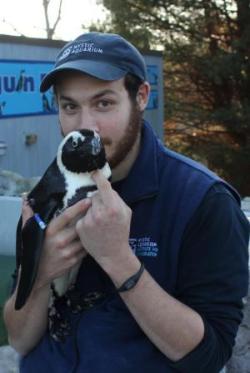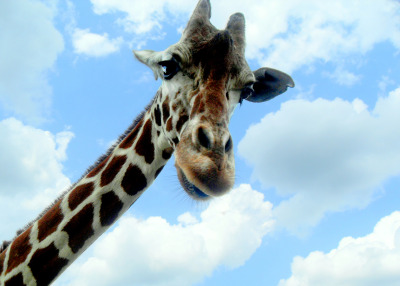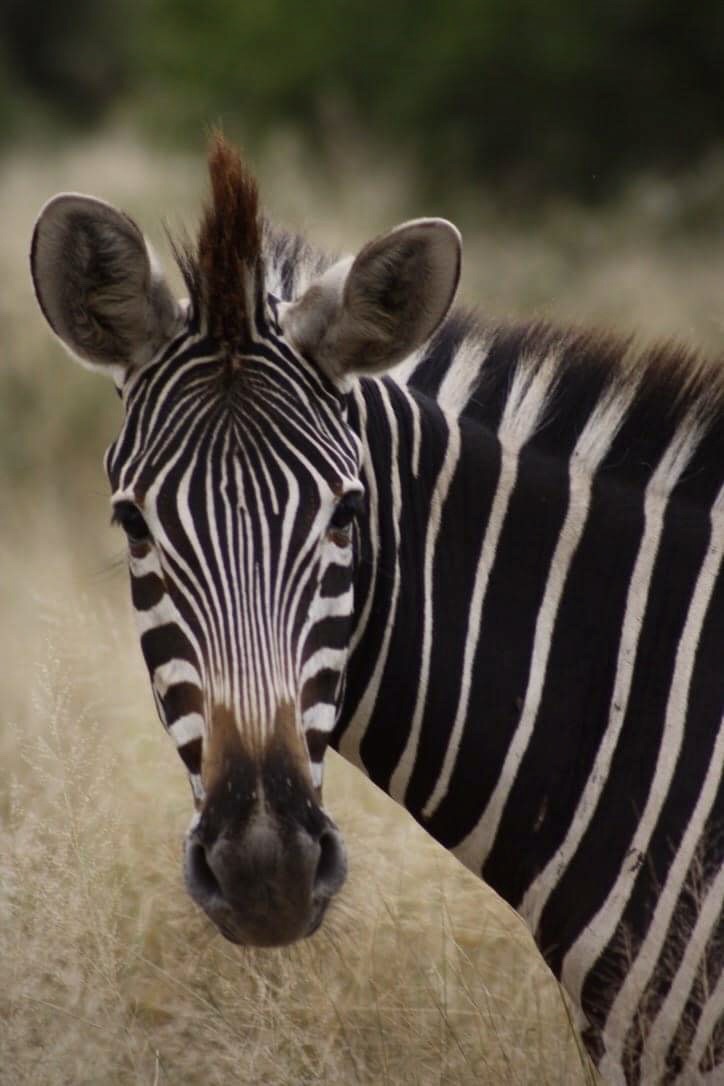My Life as a Penguin Trainer
 Tuesday, October 7, 2014 at 01:15PM
Tuesday, October 7, 2014 at 01:15PM Eric Littman, Tufts University
Life as a Vet Student, Honorable Mention
The sound of blood pounding in your ears. The blood-curdling scream of a two-foot tall dinosaur descendent echoes off of the fiberglass exhibit walls as you are charged by a being with no fear whatsoever. You stand resolute, knowing that if you flinch or attempt to escape, the little menace’s aggressive behavior will have been reinforced. Beak sinks into flesh. Flippers strike your shins with impunity. Pain. The tantrum slows and finally ends. He walks away acting like he has won, but you know the truth: his aggressive behavior did not pay off – his true goal – to make you leave his territory – has failed. You are a Penguin Trainer!
 People who haven’t worked with penguins may look at this description and be utterly confused. Penguins are adorable cuddly creatures that sing, dance, surf, drink coke and slide on their bellies! Though I’ve never seen a penguin ask a polar bear for a bottle of soda, they can still be adorable and cuddly, but that takes time and hard work. Many people think of animal training as “Sit. Good boy. Here’s a treat.” And though that is one aspect of animal training, it doesn’t cover the animals that may not eat more than two to three pieces of food per day. Much of penguin training actually consists of reading behavior and knowing when to stay put, and knowing when to distance yourself. Offering treats (in this case fish) can be effective, but they make for short training sessions. Progress with penguin training is not measured in hours or days, it is hard-won in weeks, months and sometimes even years of relationship building.
People who haven’t worked with penguins may look at this description and be utterly confused. Penguins are adorable cuddly creatures that sing, dance, surf, drink coke and slide on their bellies! Though I’ve never seen a penguin ask a polar bear for a bottle of soda, they can still be adorable and cuddly, but that takes time and hard work. Many people think of animal training as “Sit. Good boy. Here’s a treat.” And though that is one aspect of animal training, it doesn’t cover the animals that may not eat more than two to three pieces of food per day. Much of penguin training actually consists of reading behavior and knowing when to stay put, and knowing when to distance yourself. Offering treats (in this case fish) can be effective, but they make for short training sessions. Progress with penguin training is not measured in hours or days, it is hard-won in weeks, months and sometimes even years of relationship building.
 Tufts in
Tufts in  Life as a Vet Student
Life as a Vet Student 

